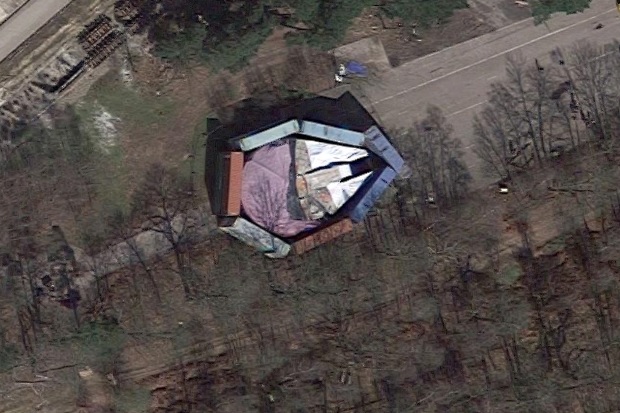
Spot the Millennium Falcon with the Force of Google Maps!

The Millennium Falcon may have made the Kessel Run in less than 12 parsecs, but apparently its stealth mode leaves something to be desired. Han Solo's famous "Star Wars" spaceship is hidden in plain sight — at least for viewers browsing the satellite views provided by Google Maps.
The Falcon's landing zone is surrounded by shipping containers on the edge of Longcross Film Studios in Chertsey, Surrey, according to The Sun. The English studio has been involved in films including "World War Z," "Thor 2," "Skyfall" and "Fast & Furious 6," its website reads. The Falcon seems to have first been spotted back in June by eagle-eyed Pete Hibbert, according to Jedi News.
Check out the Falcon in the map below (you'll notice it has been helpfully labeled, and even has a collection of reviews from some online jokesters):
At the time of publication, the Millennium Falcon is rated 4.6 stars.
Han Solo's famous flier is partially covered by a tarp, but is clearly recognizable, and looks ready to fly right into "Star Wars: The Last Jedi," which comes out in theaters Dec. 15. A recent trailer for the film shows a reunion between Luke Skywalker and the Falcon — both much older than their last encounter in the first "Star Wars" trilogy. An upcoming movie spotlighting Han Solo's origins is scheduled for May 25, 2018.
Email Sarah Lewin at slewin@space.com or follow her @SarahExplains. Follow us @Spacedotcom, Facebook and Google+. Original article on Space.com.
Get the Space.com Newsletter
Breaking space news, the latest updates on rocket launches, skywatching events and more!
Join our Space Forums to keep talking space on the latest missions, night sky and more! And if you have a news tip, correction or comment, let us know at: community@space.com.

Sarah Lewin started writing for Space.com in June of 2015 as a Staff Writer and became Associate Editor in 2019 . Her work has been featured by Scientific American, IEEE Spectrum, Quanta Magazine, Wired, The Scientist, Science Friday and WGBH's Inside NOVA. Sarah has an MA from NYU's Science, Health and Environmental Reporting Program and an AB in mathematics from Brown University. When not writing, reading or thinking about space, Sarah enjoys musical theatre and mathematical papercraft. She is currently Assistant News Editor at Scientific American. You can follow her on Twitter @SarahExplains.









